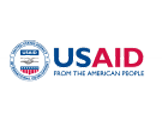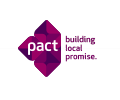RESPOND’s QI Collaborative Regions

QI Collaborative Change Package
|
Gap |
Change |
Dnipropetrovska Oblast |
Kyiv City |
Kyivska Oblast |
Mykolayivska Oblast |
Odeska Oblast |
Zaporizka Oblast
|
|
| Number of ART Sites in each region | ||||||||
| 37 | 12 | 4 | 13 | 9 | 41 | 12 | ||
|
1. HIV testing and referral |
1.1. HIV risk assessment by specialists and/or PHC providers |
|
✔ |
✔ |
✔ |
✔ |
✔ |
|
|
1.2. HIV testing with two rapid tests or ELISA by specialists and/or PHC providers |
✔ |
✔ |
✔ |
✔ |
✔ |
✔ |
✔ |
|
|
1.3. Making HTS info materials available for physicians and patients |
✔ |
|
✔ |
✔ |
✔ |
✔ |
|
|
|
1.4. Implement a patient tracking system (vouchers, coupons or invitations) |
✔ |
|
✔ |
✔ |
|
|
✔ |
|
|
1.5. Escorting patients by medical or social workers |
|
✔ |
✔ |
✔ |
✔ |
✔ |
✔ |
|
|
1.6. HTS for sexual partners of PLHIV |
✔ |
✔ |
✔ |
✔ |
✔ |
✔ |
|
|
|
1.7. Assessment of behavioral risks and clinical indicators, and HTS for in-patients within the first day of hospitalization |
|
|
✔ |
✔ |
✔ |
|
|
|
|
1.8. Double coding at the time of HTS to ensure identification of PWID |
|
✔ |
|
✔ |
✔ |
✔ |
|
|
|
1.9. Redistribution of the HTS duties among doctors and medical nurses |
|
✔ |
|
✔ |
✔ |
✔ |
|
|
|
1.10. Change in the text of the informed consent to HTS |
|
|
|
✔ |
✔ |
|
|
|
|
1.11. Provider initiated HST |
|
|
|
✔ |
|
|
|
|
|
2. Linkage and enrollment in care |
2.1. Providing the required lab tests (2 rapid tests+ELISA, CD4 and biochemical screening) over one patient visit to the Trust Office/ART site |
|
✔ |
✔ |
✔ |
|
✔ |
|
|
2.2. Extend/adapt the working hours of Trust Offices/ART sites |
|
✔ |
|
|
|
|
|
|
|
2.3. More frequent transporting of biomater ial to the lab |
|
|
✔ |
✔ |
|
|
|
|
|
2.4. Returning lab results (CD4, viral load) to ART sites through Internet |
✔ |
✔ |
|
|
|
✔ |
✔ |
|
|
2.5. Lab tests based in local blood transfusion center |
|
|
|
|
|
|
|
|
|
2.6. Text messages, phone calls or letters to patients |
✔ |
|
✔ |
✔ |
✔ |
✔ |
|
|
|
2.7. Active home visits by medical and social service providers |
✔ |
|
|
✔ |
✔ |
✔ |
✔ |
|
|
2.8. Engage specialists and family doctors into care for PLHIV |
|
|
|
|
|
✔ |
✔ |
|
|
2.9. Registering with AIDS service the HIV-positive in-patients before they are discharged from the hospital |
✔ |
|
✔ |
✔ |
✔ |
|
|
|
|
3. Treatment |
3.1. Initiation and management of ART at ART site |
|
✔ |
✔ |
✔ |
|
✔ |
|
|
3.2. Transfer patients on ART from AIDS Centers to local ART sites |
✔ |
|
✔ |
✔ |
✔ |
✔ |
✔ |
|
|
3.3. Identification and treatment of PLHIV in discordant couples, par.1.8. |
|
|
✔ |
|
|
✔ |
|
|
|
3.4. ARV drugs stock management at ART site |
|
|
✔ |
✔ |
✔ |
✔ |
✔ |
|
|
3.5. Dispensing of ART for six months |
|
|
✔ |
✔ |
✔ |
✔ |
|
|
|
3.6. Follow-up visits once in 12 months |
|
|
|
|
✔ |
✔ |
|
|
|
3.7. ART by PHC physician |
|
|
|
|
|
✔ |
|
|
|
4. Cross-cutting |
4.1. Implement electronic database for the patient and individual-level PLHIV service tracking |
✔ |
✔ |
✔ |
✔ |
✔ |
✔ |
✔ |
|
4.2. Develop and implement regional and local referral protocols/patient pathways |
|
✔ |
✔ |
|
|
✔ |
|
|
|
4.3. Increase the number of Trust Offices/ART sites |
|
|
✔ |
✔ |
✔ |
|
|
|
|
4.4. Train physicians and nurses on HTS |
✔ |
|
✔ |
✔ |
✔ |
✔ |
|
|
|
4.5. Train physicians on ART |
|
|
✔ |
✔ |
✔ |
|
|
|
|
4.6. Train physicians on management of HIV/TB co-infection |
✔ |
|
✔ |
✔ |
✔ |
✔ |
|
|
|
4.7. HIV rapid tests purchasing by a local/district budget |
✔ |
✔ |
✔ |
|
|
|
|
|
|
4.8. At least monthly meetings of local QI teams |
✔ |
✔ |
✔ |
✔ |
✔ |
✔ |
✔ |
|
|
4.9 Cooperation with NGOs (case management by social workers) for linkage and enrollment in care of PLHIV from key populations |
|
|
✔ |
✔ |
✔ |
|
|
|
|
4.10. Introducing a position of social worker at health care facility/ART site |
|
|
|
|
|
|
|
|
|
4.11 Implementation of the “Trust” hotline in a region. |
|
|
|
✔ |
|
|
|
|



